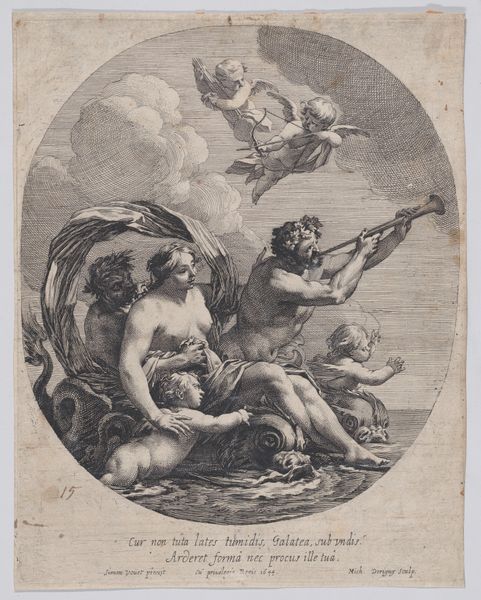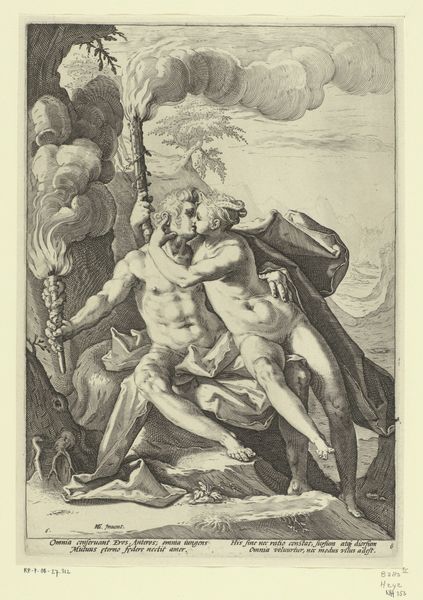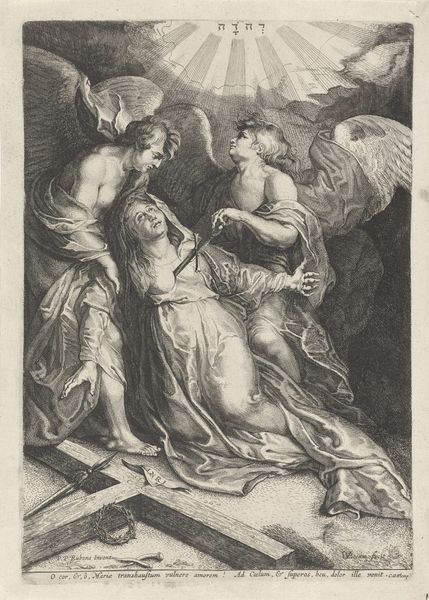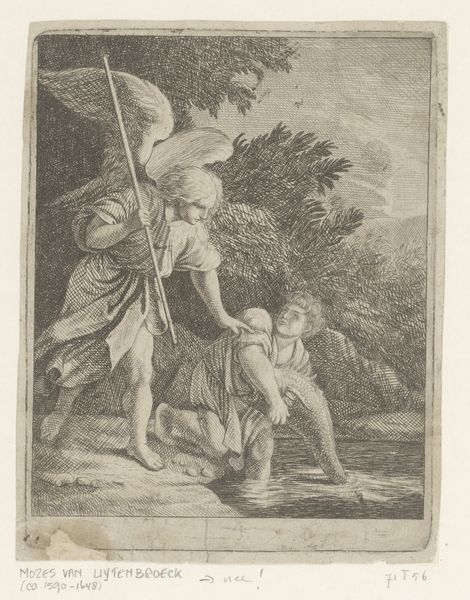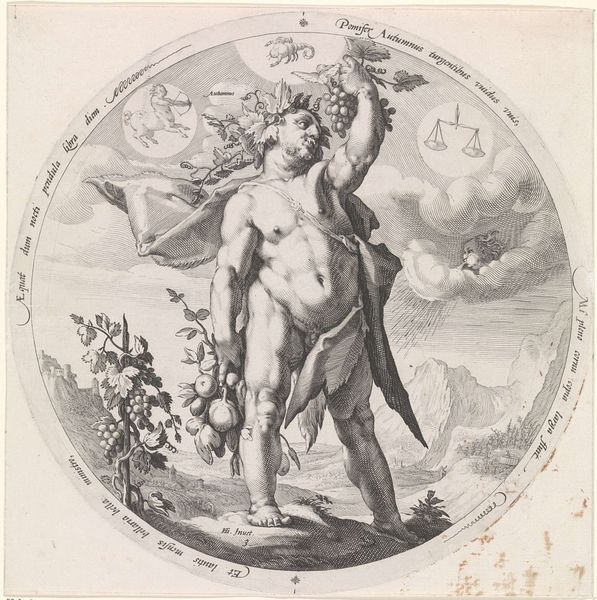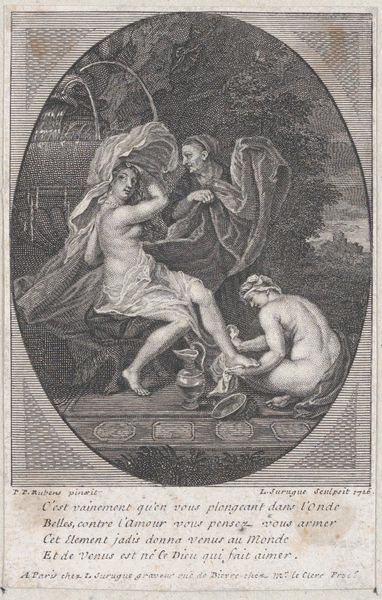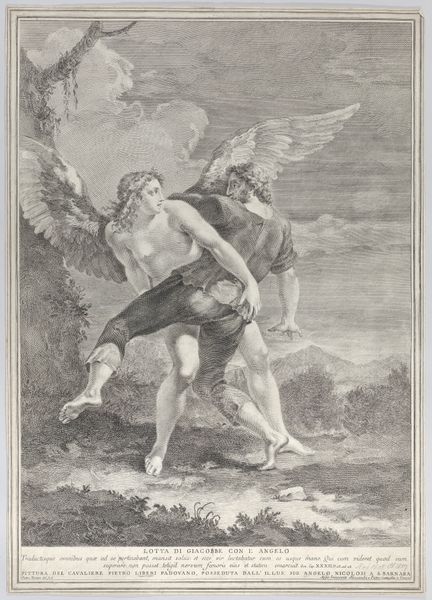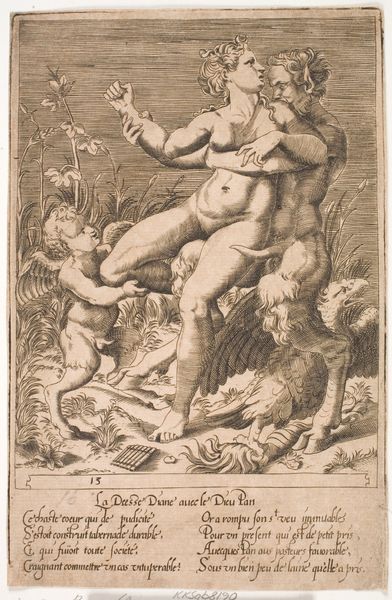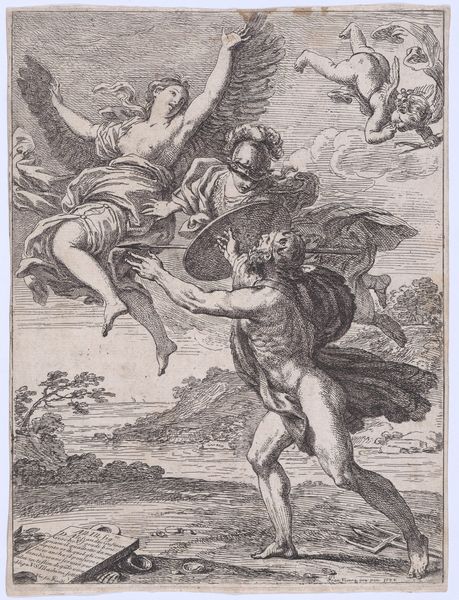
Winged female figure, draped and carrying a staff, striding behind a winged putto, who twists to look over his left shoulder, a round composition 1550 - 1600
0:00
0:00
drawing, print, engraving
#
drawing
#
allegory
# print
#
mannerism
#
figuration
#
line
#
engraving
Dimensions: sheet: 6 3/16 x 5 11/16 in. (15.7 x 14.5 cm)
Copyright: Public Domain
Editor: Here we have a print entitled "Winged female figure, draped and carrying a staff, striding behind a winged putto" made between 1550 and 1600 by an anonymous artist. I’m struck by the figures seeming to move urgently forward within the circular composition. What does this work communicate to you? Curator: Well, viewing this through a historical lens, the allegorical nature is front and center. These figures – the winged woman with a staff, and the putto – exist within a complex visual and social language of the time. The 'Cum privilegio Summi Pontificis' inscription at the bottom indicates papal approval. How might that affect our understanding? Editor: That suggests the Church was directly involved or at least endorsed the piece. But involved in what way? Curator: Consider the Reformation's impact. The Church employed imagery strategically. These allegories promoted specific virtues, ideas, or even political agendas. Who gets to determine whose image goes where, and what symbols they use? Mannerism, the art style that the print aligns with, emphasizes artifice and elegance and distortion - all of which were employed to move viewers emotionally or even intellectually. Do you see how that might influence our perception of what this image is ‘supposed’ to be about? Editor: So the artist, even if anonymous, made intentional choices about form and symbolism, working within the context of religious authority. Does the fact that this image is printed, therefore more easily circulated, play a part? Curator: Absolutely. Prints allowed wider dissemination of ideas and reinforced particular narratives. Examining it through the lens of print culture reminds us it wasn't just about artistic expression but about propaganda and the formation of public opinion too. Editor: I see now how much social and historical context informs our understanding, even for something seemingly straightforward. Curator: Precisely. It's a reminder that art is rarely created in a vacuum and its reception is shaped by the forces at play during its time.
Comments
No comments
Be the first to comment and join the conversation on the ultimate creative platform.

